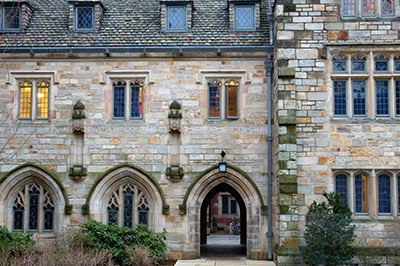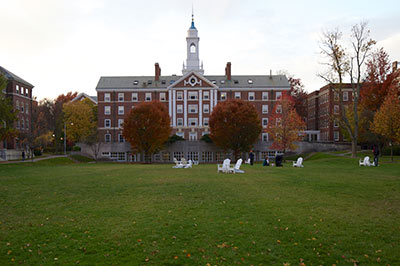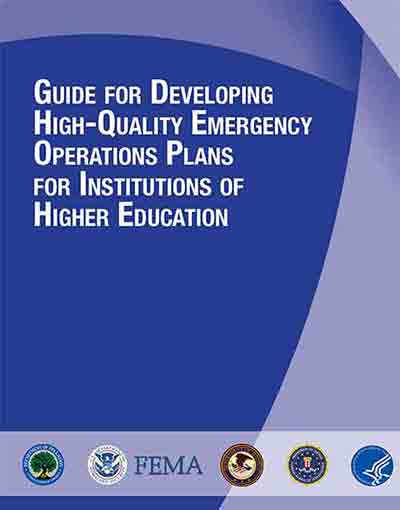The Plant Operations Call Center (POCC) receives requests from campus in a variety of forms – by phone, fax, email, the internet and directly through our Facilities Management System. In addition to our central responsibility of communication, Work Management is responsible for the distribution of all estimate requests. Coordination and notification of Building Equipment Shutdowns is also handled by Work Management. Our Project Coordination efforts continue to grow as customers become accustomed to this service and we continue to support coordination for a variety of projects throughout Plant Operations. The Preventive Maintenance (PM) Planning program is another major responsibility of Work Management which also continues to grow as numerous items are added to the program. Finally, our Quality Assurance Inspection program, which was initiated in recent years, supports Plant Operations effort to continually improve our services to the University of Michigan community.
Tag: Higher Education
Towards regenerative development: A methodology for university campuses to become more sustainable, with a focus on the University of South Florida
McDonald, 2008
The administrations of several universities have developed strategies to reduce the negative environmental effects created by their institutions. Because no single, comprehensive methodology to guide institutions to sustainability exists, these strategies range widely in scope. As well, the definition of “sustainability” differs for these various institutions, resulting in strategies ranging from small-scale recycling programs to major initiatives to incorporate green building and revamping curricula. This study attempts to create the first comprehensive methodology to guide university campuses and processes to become regenerative. Regenerative systems “produce more resources than needed, provide resources for other projects, and enhance [the] environment” (Bernheim 2003), and are synonymous with the “triple top line” of sustainability presented by Braungart and McDonough (2002).
Managing Scheduling Concerns During College Renovation
Beatrice, 2015
One of the keys to successfully managing a renovation on a large college campus is dealing skillfully with scheduling concerns. There are a variety of ways to do this.
It is important, for example, to identify potential constraints early, build them into the project schedule, and include them in contractor agreements. Understanding that construction work was to be completed in a research lab, planners found it pivotal to connect with the dominant user groups, which were the researchers. Their schedules were reviewed, including when they would be using the labs or when they would be in their offices, and to ensure that schedules aligned to avoid project disruption or delay. This allowed project teams to plan ahead and ultimately create an accurate time frame that was included in contractor agreements.
Mastering Unique Challenges of College Renovations
Beatrice, 2015
A renovation on a large college campus presents unique challenges. For one thing, a range of groups play special roles, including administration, professors, students, subcontractors, architects, engineers, and the surrounding community. At the same time, college renovations involve such typical everyday construction responsibilities as understanding the preexisting structure, managing multiple funding sources, managing waste and material, determining storage space, and organizing shifts. Other major keys to success include managing occupant concerns, scheduling issues, the budget, and communication.
React & Act: What are bonds, and how do schools use them?
Springfield, 2012
In addition to private donations, research grants and student fees, bonds make up a large portion of funding for construction projects at the University of California, California State University and community college campuses. A variety of bonds are being used to pay for these projects, representing money that must be repaid in equally diverse ways.
In “Public universities plow ahead with construction despite tight budgets,” reporter Jon Marcus writes about bond-funded construction sprouting up on campuses across the state and the general confusion surrounding bond money.
Using Federal Contracts to Enhance School and Campus Secruity
Readiness and Emergency Management for Schools (REMS), Center Office of Safe and Healthy Students (OSHS), Office of Elementary and Secondary Education (OESE), and U.S. Department of Education (ED), 2013
- Overview of “Now Is The Time” and the GSA State and Local Programs
- Overview of the General Services Administration’ s (GSA’s) Cooperative Purchasing Program
- GSA Resources
Reorganizing Custodial Departments in Higher Education
Morrison (2015)
To successfully organize (or reorganize) a higher education custodial department, one must first answer the question: What is the purpose or mission of our custodial department?
If the purpose of the organizational effort is to make educational facilities appear orderly and clean at the lowest cost, that drives a different set of actions than if the goal was to clean for health and other related results.
Learning Landscapes in Higher Education
University of Lincoln, 2010
The Learning Landscapes project is a response to those in higher education who are concerned that decision making about the development of the learning and teaching environment is not as effective as it could be. Learning Landscapes offers the higher education community a practical and conceptual framework to consider the ways in which learning and teaching spaces are being designed and developed. This notion of ‘community’ extends to all who work in universities: academics, support and professional staff, as well as existing and potential students.
The Princeton Review’s Guide to 332 Green Colleges (2014)
More and more students are going to college now than ever before, so educational institutions are busy accommodating this growth with new academic buildings and dorms while ensuring that existing facilities are running efficiently. The U.S. Green Building Council's (USGBC) LEED® green building program) helps provide a layer of accountability for college campuses seeking ways to make their green building projects, both old and new, as environmentally responsible as possible. LEED, or Leadership in Energy and Environmental Design, is a globally accepted benchmark for the design, construction, and operation of green buildings. Many of the schools profiled in these pages have LEED-certified buildings on campus or a commitment to future LEED projects, but that was not a criterion for inclusion in the book.
All of the schools in this guide, whether or not they are profiled in our annual Best Colleges book, are exemplary institutions that address the balance of people, planet, and prosperity in fascinating ways. Our hope, in coordinat- ing with the USGBC and its Center for Green Schools, is to break down what green looks like across different campuses in a way that will help you to choose the right school to live sustainably.
Guide for Developing High-Quality Emergency Operations Plans for Institutions of Higher Education
Department of Homeland Security (DHS)/Federal Emergency Management Administration (FEMA), Department of Justice (DOJ)/Federal Bureau Investigation (FBI), United States Department of Education (USDOE), & Department Health and Human Services (DHHS), 2013. Our nation’s post secondary institutions are entrusted to provide a safe and healthy learning environment for students, faculty, and staff who live, work, and study on campus. Faced with emergencies ranging from active shooter situations to fires, tornadoes, floods, hurricanes, earthquakes, and pandemic influenza, this is no easy task. Many of these emergencies occur with little to no warning; therefore, it is critical for institutions of higher education (IHEs) to plan ahead to help ensure the safety and general welfare of all members of the campus community.









